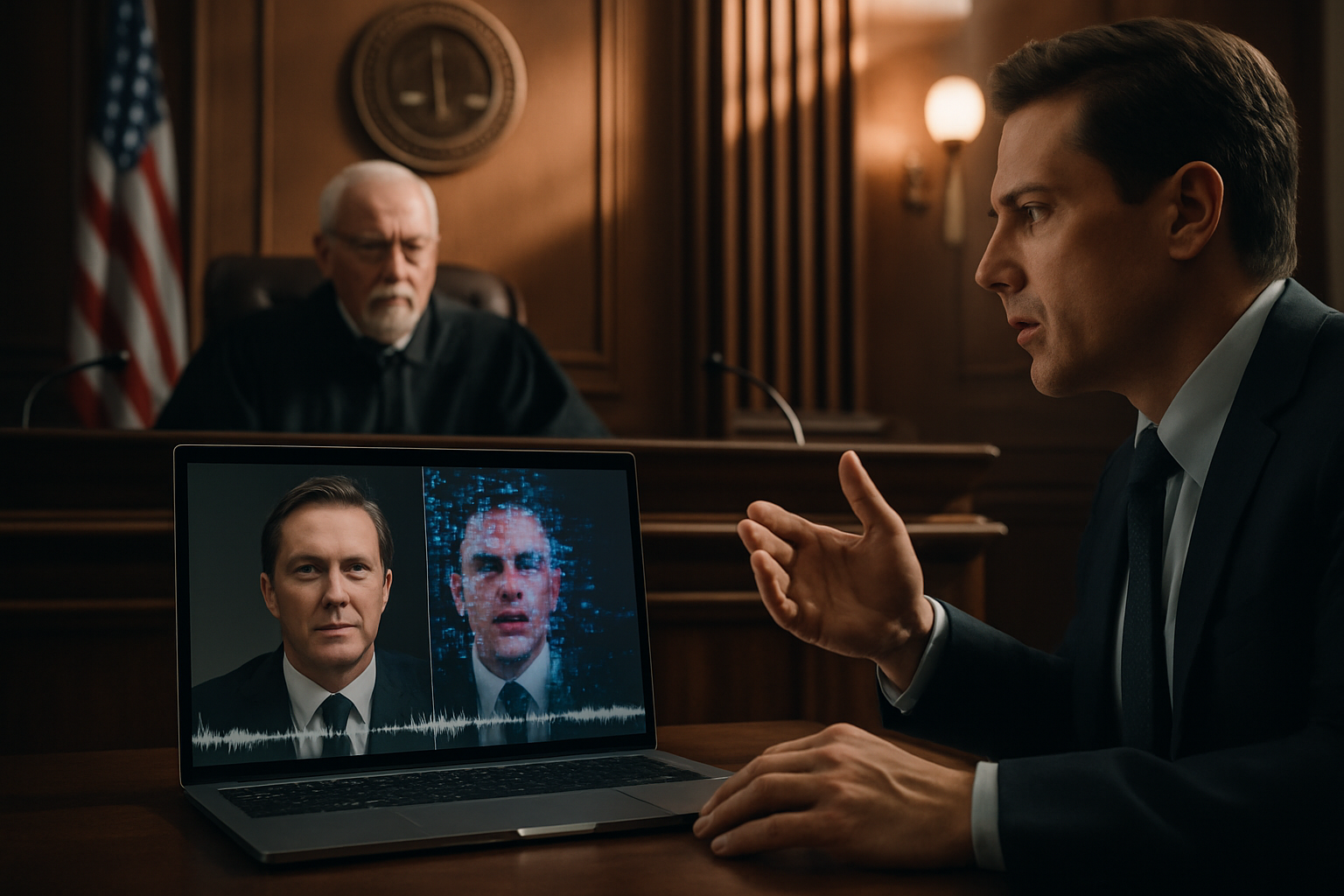Legal Implications of Deepfake Technology in Courts
Introduction: As artificial intelligence continues to advance, the legal system grapples with a new challenge: deepfake technology. This groundbreaking development has the potential to revolutionize evidence presentation in courtrooms, while simultaneously posing significant threats to the integrity of legal proceedings. Our exploration delves into the intricate web of legal, ethical, and practical considerations surrounding deepfakes in the judicial process.

Historical Context and Legal Precedents
The admissibility of evidence in court has always been subject to scrutiny, with rules and procedures developed over centuries to ensure fairness and accuracy. From the hearsay rule to the best evidence rule, the legal system has long grappled with how to evaluate and present information in court. The introduction of photography and video evidence in the 20th century brought new challenges, as courts had to determine the authenticity and reliability of these media. Now, deepfake technology presents an even more complex challenge, as it blurs the line between reality and fabrication in ways previously unimaginable.
Current Legal Framework and Challenges
As of now, there is no comprehensive legal framework specifically addressing deepfakes in court proceedings. Existing rules of evidence and authentication procedures are being stretched to their limits as they attempt to cope with this new technology. Courts are faced with the daunting task of determining the authenticity of video and audio evidence in an era where even experts can struggle to distinguish between real and fabricated content. This uncertainty raises serious questions about the fundamental principles of due process and the right to a fair trial.
Potential Impact on Criminal and Civil Proceedings
The implications of deepfake technology extend to both criminal and civil cases. In criminal trials, the introduction of fabricated video evidence could lead to wrongful convictions or acquittals, undermining the entire justice system. In civil cases, deepfakes could be used to manipulate contract disputes, defamation cases, or intellectual property conflicts. The potential for abuse is vast, and the consequences could be severe, ranging from personal reputational damage to significant financial losses.
Proposed Solutions and Legal Reforms
In response to these challenges, legal experts and policymakers are exploring various solutions. Some propose the development of advanced forensic tools to detect deepfakes, while others advocate for stricter authentication requirements for digital evidence. There are also calls for new legislation specifically addressing the creation and use of deepfakes in legal contexts. Some jurisdictions are considering the implementation of digital watermarking or blockchain technology to verify the origin and integrity of digital evidence.
Ethical Considerations and Expert Testimony
The rise of deepfake technology also raises profound ethical questions for legal professionals. Attorneys must navigate the fine line between zealous advocacy and the potential misuse of technology. Courts are grappling with how to instruct juries about the possibility of manipulated evidence. The role of expert witnesses is also evolving, as specialized knowledge in digital forensics and artificial intelligence becomes increasingly crucial in evaluating the authenticity of evidence.
International Perspectives and Cross-Border Challenges
The global nature of deepfake technology presents unique challenges for international law and cross-border litigation. Different countries are approaching the issue with varying degrees of urgency and different legal frameworks. This disparity could lead to forum shopping in international disputes, where parties seek jurisdictions with more favorable rules regarding deepfake evidence. Harmonizing international standards for dealing with deepfakes in legal proceedings is becoming an increasingly important goal for the global legal community.
The Future of Truth in the Courtroom
As deepfake technology continues to advance, the very notion of truth in legal proceedings may need to be reevaluated. Courts may need to rely more heavily on corroborating evidence and less on standalone video or audio recordings. The role of human judgment and intuition in evaluating evidence may become even more critical. As we move forward, the legal system must adapt to ensure that justice can be served in an era where seeing is no longer necessarily believing.





